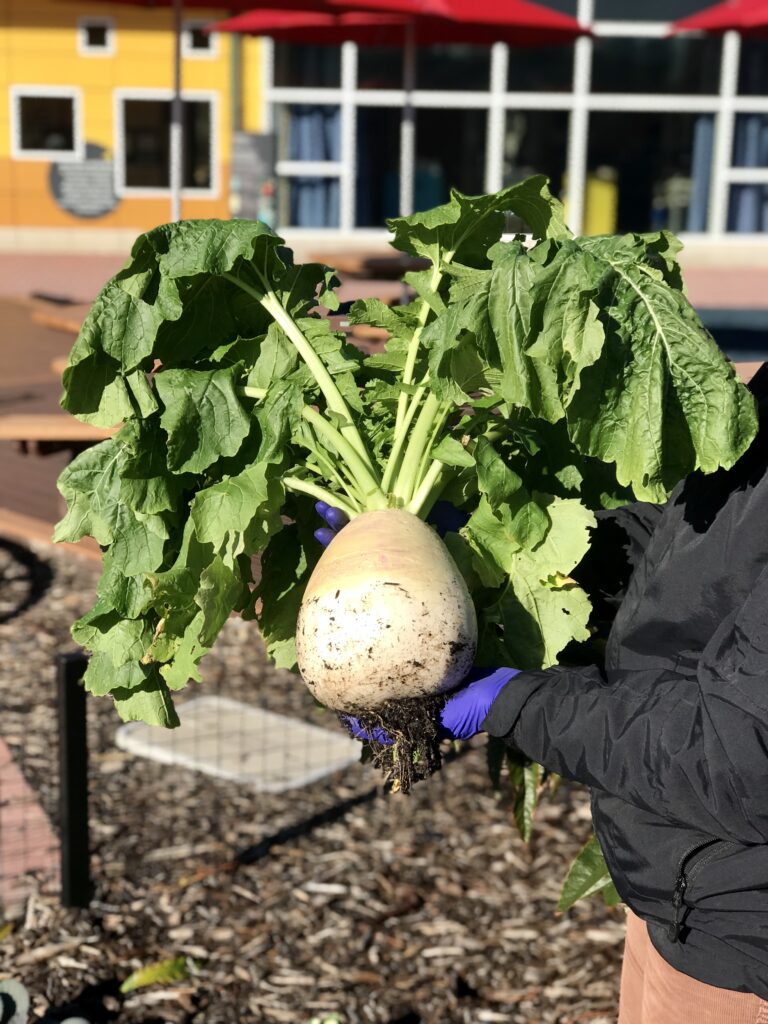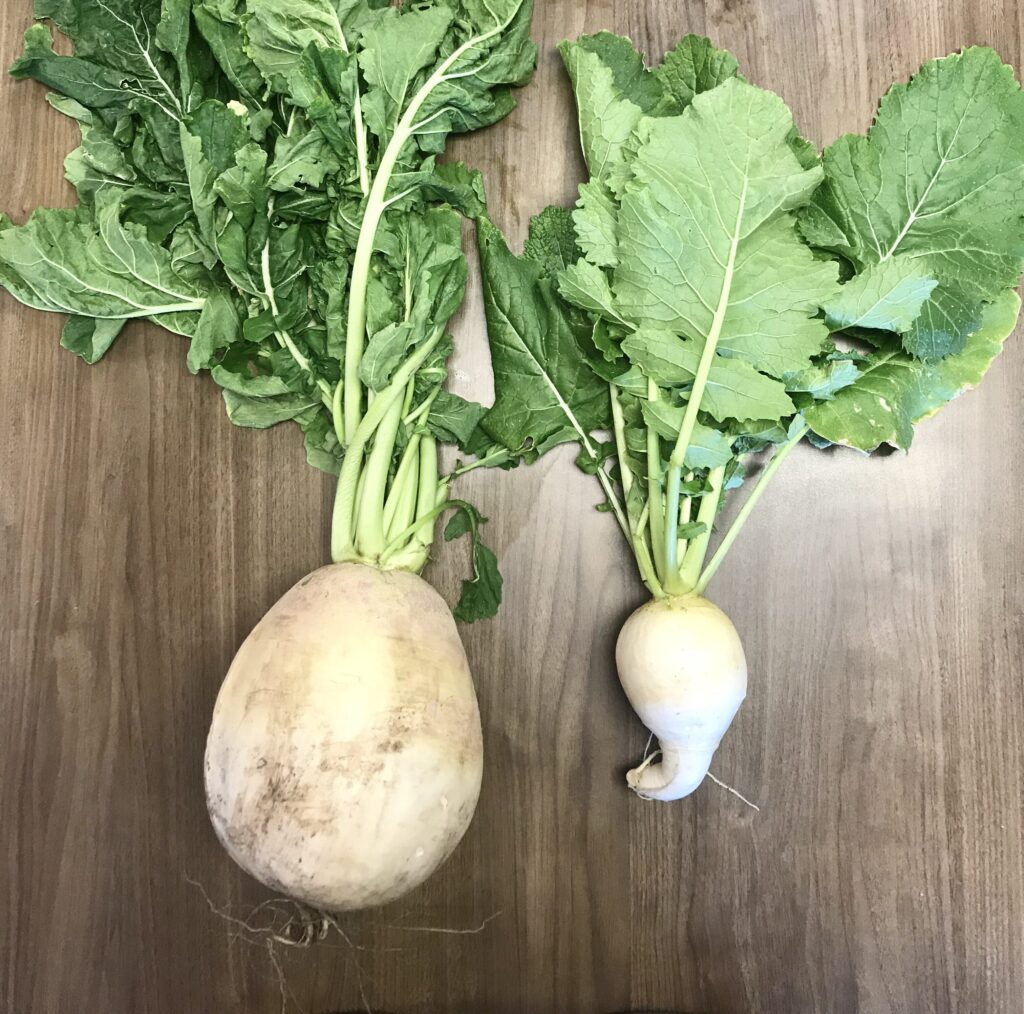The Trending Turnip
Don’t turn up your nose to turnips.
There has been renewed interest in winter veggies, adding nutrients to comfort food during cold winter months. The Horticulture Department at the Virginia Zoo is proud to announce the growth of a five pound and nine ounce white turnip. Typical turnip roots weigh an average of two pounds, although they are usually harvested when smaller. The Zoo’s titanic turnip appeared on the scene at the Animal Wellness Campus vegetable garden after approximately 60 days from planting to harvest.

Preparations for its arrival included improving the soil growing environment. A secret beneficial fungus was employed. Mycorrhizae fungi is a naturally occurring fungi that allows plants to extract more nutrients and water from the soil, while stimulating microbial activity. These fungi increased the plant’s ability to tolerate environmental stresses, including winter weeds and insects, aiding it to grow much larger in size than plants not exposed to the beneficial fungi.
Turnips are grown best in cool weather and will be bitter if grown in warm weather. For humans, when eating the turnip greens (referred to as turnip tops in the UK), smaller leaves are preferred; however, the larger leaves can taste better if water from the initial boiling is replaced with fresh water. Blanching and then sautéing the leaves offers a tasty veggie with a peppery flavor. Include turnips in your next dinner with roasted winter veggies. What about turnips with bacon and pear or turnip purée? Yum!

Tender varieties are grown for human consumption and larger varieties are grown as feed for livestock. Growing vegetables and fruit on grounds isn’t intended for humans to eat, instead the Horticulture Department grows these types of plants to benefit Zoo animals by supplementing their diets with organic produce – from farm to trough. Turnip roots, stems, and leaves are palatable to livestock (Undersander et al., 1991). However, livestock can become sick if they are allowed to eat too many turnip leaves too quickly, and it is important to have a balance of hay and other feed.
What will the Horticulture Department grow next and in which garden? Wait until next season to see!